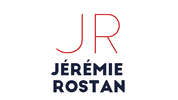or "develop values towards the subject matter". Still, it “remains the most widely used teaching method.” For that reason, “it is important… to direct such lectures in contributing to desired instructional outcomes. An effective lecture should direct students’ learning via focussed attention on the lecture content and foster motivation for subsequent self-revision.” Fortunately, “students’ intentional cognitive efforts can be enhanced by applying cognitive-load theory in lectures.”
In a nutshell, Cognitive-Load Theory (CLT) “posits that optimal learning will occur if the instruction is aligned with human cognition. Working memory has limited information-processing capacity that, if exceeded, may cause cognitive overload and hamper learning. The information that working memory receives and processes is known as ‘cognitive load’, which is composed of intrinsic load (IL) and extraneous load (EL).” IL depends on the inherent complexity of what is being taught. It is irreducible, and is what has to be learned. In contrast, EL depends on the way in which information is presented. It is therefore variable, and does not contribute to learning. The type of mental effort required to process this double load is known as “germane load”. It is limited by the capacity of working memory. To optimize learning, EL must therefore be eliminated “to ensure more available working memory capacity for information processing.” To manage students’ mental workloads during lecture, the authors developed a four-phased guideline known as the Cognitive-Load Theory-based Lecture Model (CLT-bLM). During the preparation phase (before the lecture), the model recommends to:
During the initiation phase (start of the lecture), the model recommends to:
During the delivery phase, the model recommends to
During the end phase, the model recommends to:
To test the effectiveness of the model, the authors conducted a randomized control trial on 147 first year medical students from 3 public Malaysian universities. A control group was first taught a freestyle lecture on the anatomy of the heart. Then, lecturers were trained in CLT-bLM before giving a new presentation to a second cohort of students. The latter completed pre- and post-lecture assessments MCQs immediately and then 3 and 10 weeks after the class. They also completed a cognitive-load questionnaire, which confirmed that the experimental group invested lower mental effort in processing information than the control group. CLT-bLM did not only impose lower cognitive load: it also promoted knowledge acquisition and retention. Interestingly, the difference was small and stable at first, but grew over time from 5% to 107%. Source: Hadiie et alia (2018), "Empowering students’ minds through a cognitive load theory-based lecture model: a metacognitive approach", Innovations in Education and Teaching International, 55:4, pp. 398-407.
0 Comments
Your comment will be posted after it is approved.
Leave a Reply. |
|
Proudly powered by Weebly

